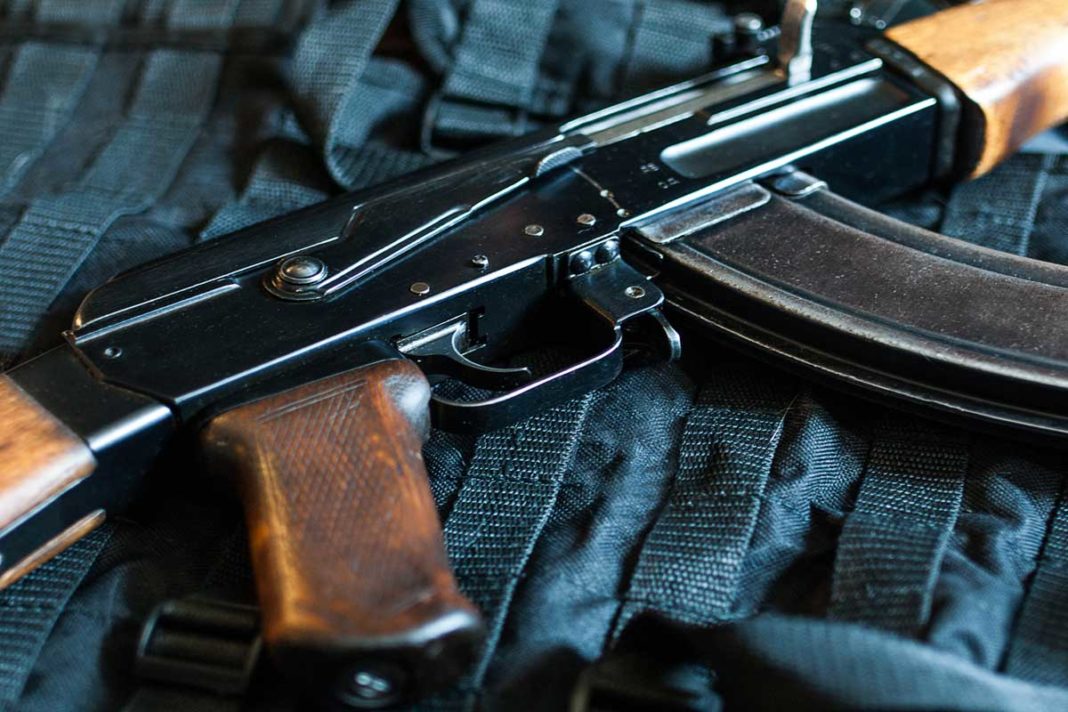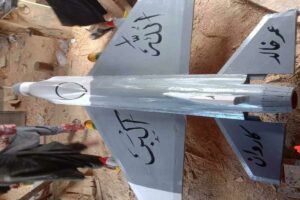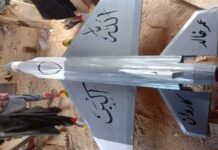The Indian army plans to purchase 70,000 AK-203 rifles off-the shelf from Russia. The Indo-Russian joint venture will eventually produce some 7.5 lakh of these rifles at the Korwa, Amethi factory.
A nation must upgrade its weaponry—even at great cost if needs be. That is beyond dispute. However, people must be educated about the technical issues of new acquisitions so that they are not deluded by the typically hyperbolic and misleading descriptions found in the media.
Government itself had certified the INSAS as very satisfactory
The AK-203 has been touted as a superior replacement for the INSAS, which is now described in the media as having a large number of defects. The media has either short memory or they are intellectually dishonest, or both.
For their information, the Government of India itself had informed the Rajya Sabha that the INSAS rifle produced in Ordnance Factories had been accepted by the army after extensive trials and its performance had been found to be very satisfactory.
Some 9 lakh INSAS rifles served the country from 1998 onwards. A statement made on the floor of the parliament has a sanctity attached to it. Those listing the defects of INSAS would be at a loss to explain whether the Government had lied to the parliament or we had been playing with the lives of our soldiers all these years?Or, whether the so-called extensive army trials were farcical? As Maj. Gen. (Retd) Bhupendra Yadav, who had worked for long with the Department of Defence Production (DDP)also asked, “After all what exactly are the Master General of Ordnance(MGO) and Director General of Quality Assurance (DGQA) there for anyway?…On OFB’s special/extended board are included the MGO and DGQA who are senior serving officers appointed by the Indian army specifically to represent the users and their interest on quality aspects.”
Given the clearly duplicitous conduct of the media, I will examine the claimed merits of the AK-203 over the old AK-47 rifle in this article and refrain from commenting any more on the INSASuntil the Government itself decides to clarify with respect to its earlier claim.
AK-203 rifle: its strengths and weaknesses
The AK-203 belongs to the AK-200 series of rifles (from AK-200 to AK-205). The AK-200 fires the 5.45×39 mm cartridge; AK-201 fires the NATO 5.56x45mm; AK-202 is the carbine version of AK-201; AK-203 fires the 7.62x39mm; AK-204 is the carbine version of AK-203; and AK-205 is the carbine version of AK-200.
To say that the AK-47 is just an assault rifle would be an understatement; it is a living legend amongst assault rifles on account of its phenomenal ruggedness and reliability.
However, it is also a fact that its ruggedness and reliability comes at the cost of relatively poorer accuracy. The AK-47 is designed with generous clearances between moving parts which enable it to function in dirty environments with minimal maintenance. The looser tolerances, however, do not allow the precision and consistency that are required of more accurate firearms.Moreover, the AK-47 uses the long-stroke piston system wherein the piston and the bolt carrier move backward together. Hence, there is greater vibration and balance shift due to the moving parts than in a rifle with short-stroke piston system, with a consequent adverse effect on accuracy. Just for illustration, even at 300m, as a study by the US army had concluded, the AK-47 is 6% less accurate than M16A1.
When the AK-47 was designed, it reflected the contemporary Soviet doctrine of massed fire by soldiers on the run and not for accurate, long range fire.
The uninitiated reader may wonder why is it that the rear sight of the AK-47 is graduated to 800 m when its effective range is about 350 m only. There are two reasons. The first is that longer range settings are intended for delivering area suppression fire and not really aimed fire. These settings mirror the older Mosin-Nagant and SKS rifles which the AK-47 replaced and thus eased transition and simplified training. The Mosin-Nagant, it may be recalled, was introduced in 1891 and served the Soviets through the Second World War. It had an effective range of 500m without telescope and 800m with telescope—it was this rifle that was used by the Russian sniper in the famous film ‘Enemy at the Gates’ for the Battle of Stalingrad.
Exactly the same limitations of accuracy apply to the AK-203 also as the mechanism remains the same as that in the AK-47. According to the authoritative modernfirearms.net, the 200-series Kalashnikov rifles have same basic design, layout and major features as the AK-47.
Misleading information about greater lethality of its bullet
Those in the media who are claiming the AK’s 7.62x39mm cartridge to be more lethal than the NATO 5.56x45mm cartridge are pitifully ignorant in such matters. The debate has been settled decades ago.
NATO conducted tests for three years, 1977-1980 to bust the myth. Research papers were written on the subject including editorials in the prestigious Jane’s Infantry Weapons and the Small Arms Defense Journal. A NATO Workshop on Small Arms Lethality was also hosted by the United Kingdom as late as February 2009 at their Defence Academy in Shrivenham.
Animal studies of the wounding effects of the 5.56×45 mm round versus the 7.62×39 mm have found that the 5.56 mm round is actually more damaging, dueto the post-impact behaviour of the 5.56 mm projectile resulting in greater cavitation of soft tissues. The US Army has concluded that the lack of close range lethality of the 5.56×45mm is more a matter of perception than fact.With controlled pairs and good shot placement to the head and chest, the target was usually defeated without issue.
Provision for accessories is alright but not critical
The provision of a Picatinny rail for say, mounting a telescope is essentially window-dressing because adding a telescope is not going to overcome the rifle’s inherent limitations in accuracy. The AK was never intended for sniper-like accurate shooting.
The Picatinny rail can also be used for mounting collimator, night and thermal imaging scopes, infrared illuminators and designators, and tactical lights, etc. However, these accessories are not critical value-additions for a rifle that is to be used by all the soldiers. They have their value for special purposes and special operations, not for the average soldier and regular combat.
The folding and adjustable butt-stock,and windowed and rifled magazine are improvements over the AK-47 that make it somewhat more user-friendly. However, as James O’Connell of Virginia Tech concludes in his research ‘The M16 in Vietnam: A History of the Weapon’s Effectiveness in the Vietnam War and the Necessity of its Creation’, poor ergonomics remains the bane of the AK-47 (and also of AK-203 with similar ergonomics) in comparison to say, the M-16 assault rifle.
Similarly, there is nothing so innovative about its muzzle brake or recoil compensator and flash suppressor—every modern rifle incorporates them. Even the AKM rifle designed in 1959 had a muzzle brake. As for flash suppressors, it must be kept in mind that their primary intent is to reduce muzzle flash and the chances that the shooter will be blinded in low-light shooting conditions. It is only a minor secondary benefit if italso reduces the intensity of the flash visible to the enemy down range.
Issues of range, rate for fire and automatic fire
The AK-203 has the same effective range as the AK-47 rifle. However, the media’s glorifying it as being ‘over three football fields’ is clearly an attempt to mislead the uninitiated.
Rate of fire is not really critical in a war because in actual combat, the soldier carries only a limited quantity of ammunition and cannot afford to waste them firing on full auto—that happens only in films. It must be kept in mind that precisely for this reason; the US army has all along resisted fully automatic rifles.
Of the M16 rifle family only the M16A1 and A3 had full-auto facility; the A2 and A4 did not have full-auto. Of these, the A3 was adopted in small numbers by the US Navy SEAL, Seabee, and Security units whereas the A2 was produced in much greater numbers, having been adopted as the official weapon of both the army and the Marine Corps. In the Colt M4 carbine family also only the M4A1 carbine has full-auto. Hence, the full-auto rate of fireof the AK-203 which at 600 rounds per minute is the same as that for the AK-47,cannot be scientifically touted as a USP of the rifle as a section of the media is doing. Even the magazine capacity is the same at 30.
There is no doubt that coming from the legendary AK family of rifles; the AK-203 is a great assault rifle—somewhat better than the parent AK-47 rifle. However, the adulation must end at that. To claim that it will be a game-changer is childish.
Also Read:
- Jammu & Kashmir (J&K) Going Full Spectrum
- Bound to Burst – The Agnipath Bubble
- The Spectre of Terror
- Poonch Terror Attack – Kashmir
- The Chinese Naming Game Continues Unabated In Arunachal Pradesh, India
- New LAC In Ladakh
~ News4masses is now also on Google news
~ If you want to contribute an article / story, please get in touch at: news4masses[at]gmail[dot]com


























thanks for the information